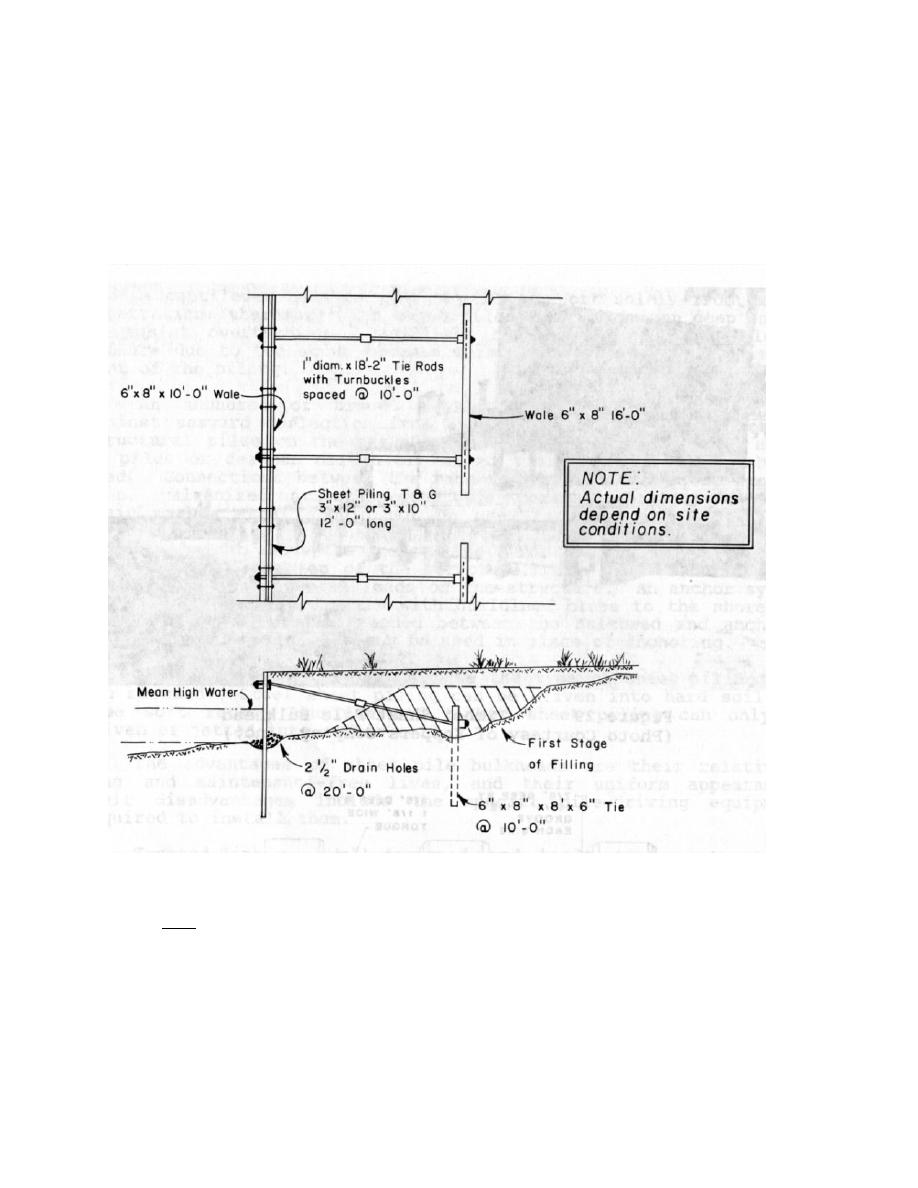
Only corrosion-resistant or protected metals should be used for hardware and fasteners. Wrought
iron anchor rods with turnbuckles and bolts have good durability. Galvanized fasteners are also
recommended. Carbon steel should not be used unless protected with special coatings, such as coal-tar
epoxy or other bituminous materials. Minimize the number of washers under bolt heads and nuts to
reduce the length of exposed bolt shanks, and provide a tight fit between bolted timbers so that the bolt
shanks are not exposed in the gaps. Bolt holes should be no more than 1/16 of an inch larger than the
shank to insure a tight fit. Finally, washers should be provided under bolt heads and nuts to insure that
these bear evenly on the timber members.
Figure 31. Plan View and Cross Section of Typical Sheet Pile Bulkhead [American Wood Preservers
Institute (1970)]
Steel. Steel sheet piling, probably the most widely used bulkhead material (Figure 32), can be
driven into hard, dense soil and soft rock. The interlocking feature of the sheet pile sections (Figure 33)
provides a relatively sand-tight fit that generally precludes the need for filters. This close fit may also be
essentially watertight, so regularly spaced weep holes are recommended. These, and lifting holes in the
piling, should be backed with properly graded stone filters or filter fabric to prevent the loss of backfill.
65



 Previous Page
Previous Page
